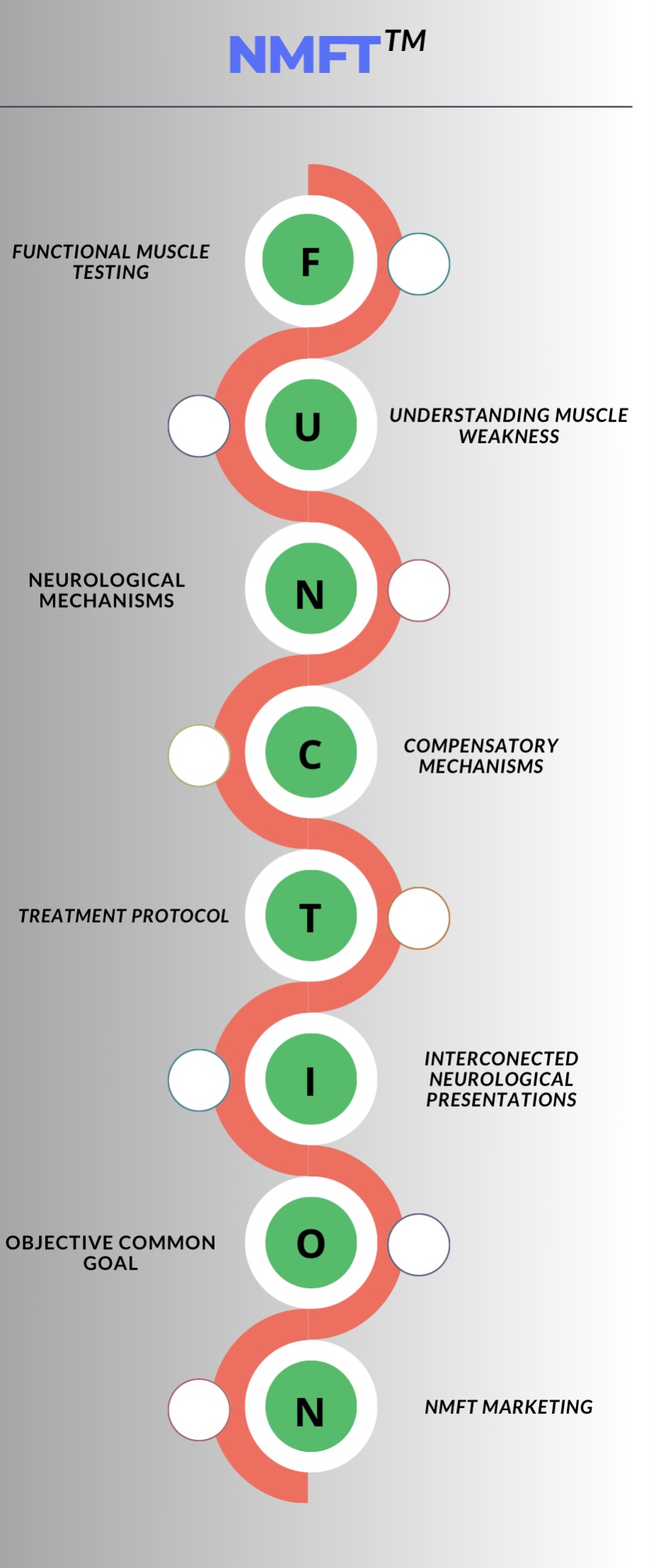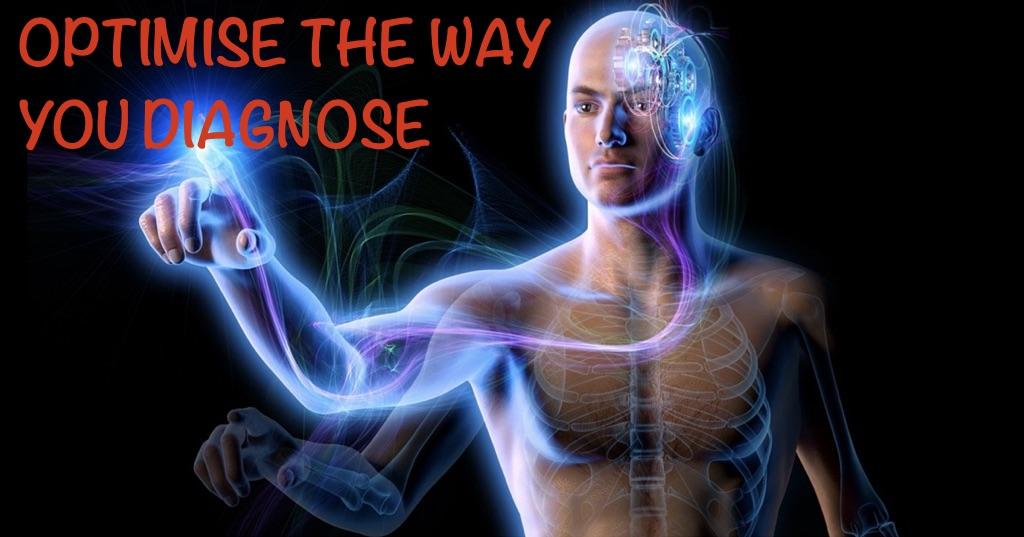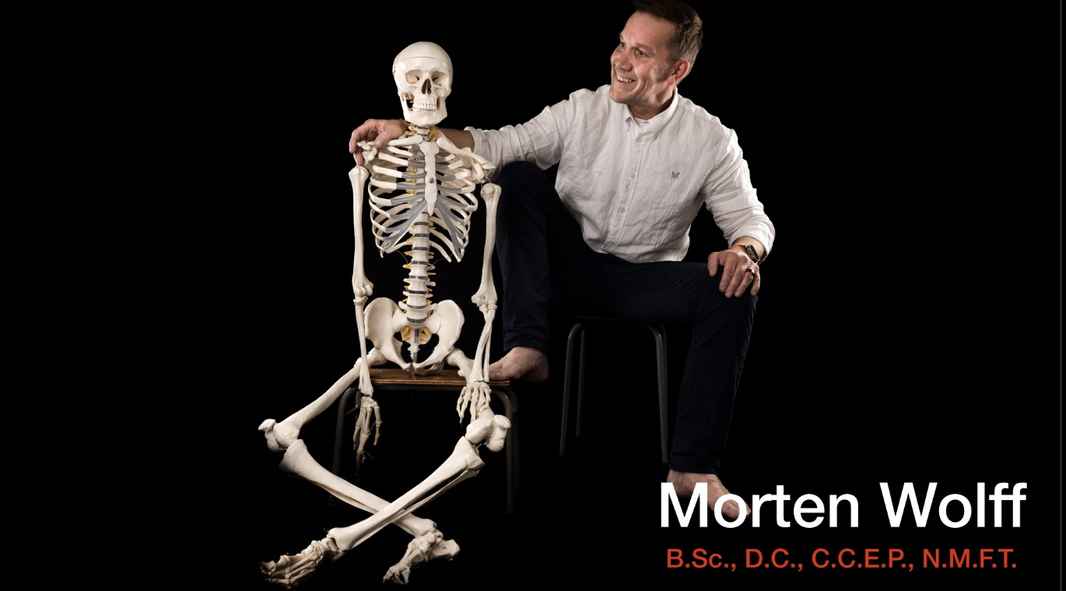FREE SEMINAR for Chiropractors, Physiotherapists, Osteopaths and practitioners with similar back grounds.
5 Hidden Reasons Patients Drop Out
(and the Simple Neuromuscular Fix)
Free Webinar for Clinicians – Understand why patients really stop treatment, and how a simple neuromuscular approach can significantly improve retention and outcomes
Have you experienced a patient disappearing after just a few consultations? You’re not alone – studies show that up to 70% of physiotherapy patients never complete their course of care. Often, this isn’t due to lack of professional skill, but hidden neuromuscular mechanisms that sabotage progress. When no measurable changes occur, patients lose hope – and quit.
But it doesn’t have to be this way. With Neuromuscular Functional Testing (NMFT), you can identify those “invisible” problems and even restore muscle function immediately. By testing the nervous system’s control rather than focusing only on joints and tissues, you can achieve faster results – and strengthen your patient’s trust in your treatment.
In this free webinar, you will discover:
-
The 5 surprising reasons why patients stop treatment too early – and the simple neuromuscular fix for each one.
-
The NMFT method – a tool to uncover neuromuscular inhibition that traditional orthopedic tests miss, allowing you to find the true cause of pain and dysfunction.
-
A step-by-step tool for diagnosing and treating Carpal Tunnel Syndrome with NMFT – a technique you can implement in your clinic right away.
-
How to create rapid improvements for your patients: Learn how a simple reflex reset can instantly strengthen a “weak” muscle – a result that convinces even the most skeptical patients.
Ready to reduce patient dropout and improve your treatment outcomes?
🔍 A Fast Track to Identifying the Root Cause of Symptoms and Pain
Using Simple Functional Testing Techniques
(Yes, we know it sounds a little crazy 😄)
Have you ever wondered...
Why do our current diagnostic tools focus only on joints and the skeletal system—just one-third of the NEURO-MUSCULO-SKELETAL system?
Why are we still relying on outdated approaches based on symptoms, orthopedic tests, joint restrictions, misalignments, and imaging like X-rays, MRIs, or ultrasounds?
That’s the problem.
🧠 Where are the tools that assess the NEUROMUSCULAR system?
In musculoskeletal care, it’s standard to focus on:
-
Structural deviations
-
Debilitating pain
-
Limited range of motion
Treatment often targets a rotated hip, a fixed vertebra, “subluxation,” hypermobile SI joint, elevated shoulder, tight hamstrings, or weak quads. But what happens when nothing changes—despite intense or even invasive treatment?
It gets labeled as idiopathic, meaning: "unknown cause."
The Missing Piece: Protective Mechanisms in the Neuromuscular System
We know the body takes immediate protective action when muscles, tendons, or joints are exposed to extreme forces—whether from trauma, overload, or bad habits.
This often leads to inhibition and muscle weakening.
If the reflex arc or mechanoreceptors don’t reset after the stress ends...
👉 We have a lingering dysfunction.
The Solution: A Functional Approach to Neuromuscular Diagnosis
With NEUROMUSCULAR FUNCTIONAL TESTING (NMFT), you can gain insight into the underlying control mechanisms of the neuromuscular system.
💡 Remember from neurophysiology?
Some nerve receptors respond to mechanical stimuli and can be reset using manual therapy. This may immediately restore a weakened muscle's function.
By identifying the affected muscle through NMFT, we can pinpoint the exact reflex arc involved—and treat it effectively.
✅ Include the ENTIRE Neuromuscular-Skeletal System in Your Assessment
You now have the opportunity.
🔓 UNLOCK NEUROMUSCULAR DIAGNOSIS & TREATMENT
🎓 Join Our FREE WEBINAR:
Diagnosis and Treatment of Carpal Tunnel Syndrome
✅ Learn a simple and effective method
✅ Apply it immediately in your practice
✅ See real results for your patients
👉 Sign up now and discover a smarter approach to musculoskeletal diagnosis.
🔄 Ready to Your Approach to Neuromuscular Health?
Join our FREE 60-minute webinar and learn a powerful functional technique to diagnose and effectively treat the underlying causes of Carpal Tunnel Syndrome.
This highly effective method is just one of many you'll discover through our specialized functional approach.
🎓 JOIN THE FREE MASTERCLASS
🗓 Sunday 7th December 2025 at 11:00 am (CET) Copenhagen
🗓 Wednesday 10th December 2025 at 07:00 pm (CET) Copenhagen
🗓 Sunday 14th December 2025 at 11:00 am (CET) Copenhagen
✅ Identify root causes – not just symptoms
✅ Learn a hands-on technique you can use immediately
✅ Elevate your neuromuscular diagnostic and treatment skills
✅ Free E-book: "The Future of Neuro Musculoskeletal Health:
Reflex Inhibition: The Silent Saboteur of Neuromuscular control - A Neuromuscular approach to Diagnosis and Treatment of musculoskeletal conditions".
Also get INFO on how to effectively diagnose and treat CTS, Tennis and Golfer's elbow. Techniques you can use straight away!
👉 Reserve your spot now – limited availability!
"Morten knows what he is talking about. His FREE Webinar and knowledge has already helped my patients. "The best since sliced bread"." - Frank, Physiotherapist.
"I'm now so so so busy after learning and pactising the NMFT method and I get the greatest results and happiest clients ever, so go for it! - it has been a game changer for me and my clients". - Pernille, Musculoskeletal practitioner.
"After this, it's impossible to go back to the old way I was diagnosing and treating my patients. This method is logical, even for my patients, it's reliable and has given me back the joy of seeing patients again".- Niels, Chiropractor.
💡 Why You Should Learn This Method
Here are 10 reasons why a neuromuscular approach delivers more accurate diagnoses and leads to more effective treatment outcomes:
1. 🎯 Identifies the Root Cause – Not Just the Symptoms
Traditional diagnostics often focus on structural abnormalities (e.g., joint misalignments or disc degeneration), but many patients suffer from pain or dysfunction without visible damage. A neuromuscular approach reveals functional imbalances, muscle inhibition, and faulty movement patterns—offering deeper insights into the real issue.
2. 🧠 Assesses How the Nervous System Controls Movement
The nervous system governs all aspects of muscle function—from activation to coordination. Neuromuscular testing detects neurological dysfunctions that imaging tools like X-rays, MRIs, or orthopedic exams can’t reveal—enabling precise, targeted treatment.
3. ⏱ Real-Time Functional Assessment
Unlike static imaging, neuromuscular tests assess muscle function in motion. This helps expose hidden compensation patterns, asymmetries, and reflex issues—often the true source of pain and movement restrictions.
4. 🔎 Reveals Hidden Weakness & Inhibition
A joint might appear structurally sound but still lack stability if supporting muscles are neurologically inhibited or weak. NM testing identifies which muscles are underactive—and why—allowing for precise corrective treatment.
5. 🛡 Restores Reflex Stability & Prevents Injury
Protective reflexes are essential for joint stability. Injury, overload, or dysfunction can disrupt these reflexes, leading to poor stabilization and repeated injuries. A neuromuscular approach helps reactivate protective mechanisms, reducing injury risk.
6. 🎯 Increases Treatment Precision
Instead of generic rehab exercises, neuromuscular testing lets you target specific dysfunctional muscles, reflex arcs, and neural circuits—leading to faster and more lasting results.
7. ⏩ Speeds Up Recovery & Rehab
When neuromuscular control is restored, the body can heal more efficiently, activate the right muscles at the right time, and avoid compensatory injuries—resulting in faster, smoother recovery.
8. 🔧 Enhances Motor Control & Movement Efficiency
Optimal movement depends on correct timing and coordination. This method retrains muscle activation patterns to improve posture, biomechanics, and reduce wear on joints and soft tissues.
9. 🚫 Prevents Chronic Pain & Functional Loss
Chronic pain is often caused by poor neuromuscular coordination, not structural damage. By addressing dysfunctions early, you can prevent long-term compensation issues and chronic conditions.
10. 🧩 Delivers More Durable, Long-Term Results
Structural treatments (surgery, joint mobilization, injections) may provide temporary relief—but without neuromuscular correction, symptoms often return. This approach ensures lasting improvements in movement, stability, and pain reduction.
🔍 In Summary
By integrating neuromuscular assessment and treatment, you'll make more accurate diagnoses and create targeted, effective treatment strategies—leading to:
-
Faster recovery
-
Enhanced performance
-
Long-lasting results
Something a purely structural approach simply can’t deliver.
🧪 Test – and You Will Know
What if you could truly understand the cause of the most common muscle and joint problems?
_____________________________________________________________________________
Neuro Muscular Function Tests:

🚀 Why You Should Attend
-
Manual muscle testing gives you access to underlying neural control mechanisms.
-
You’ll gain a simple, functional screening tool that’s compatible with any treatment model.
-
Learn how to make your treatments more precise and successful.
-
Let patients experience results instantly—no persuasion needed.
-
Gain tools to treat complex conditions like chronic whiplash, dizziness, headaches, and low back pain.
-
Screen symptom-free athletes and patients to prevent injuries before they happen.
-
Understand hidden performance barriers in athletes who seem to plateau.
💥 Don’t miss this opportunity to revolutionize your practice.
Click below to reserve your seat and take the first step toward functional neuromuscular mastery.
👨⚕️ About Morten Wolff
Morten Wolff is a leading expert in Neuromuscular Functional Testing (NMFT)—a treatment model that integrates neurology with functional muscle testing.
“I learned it the hard way.” - Motorbike accident!
He graduated as a chiropractor in 1991 from the Anglo-European College of Chiropractic and has since founded four clinics—two in the UK and two in Denmark—by incorporating NMFT into the diagnosis and treatment of musculoskeletal disorders.
In addition to being a speaker and educator, Morten has helped 18 clinics and countless practitioners successfully integrate NMFT into their clinical workflows through his courses and seminars.



